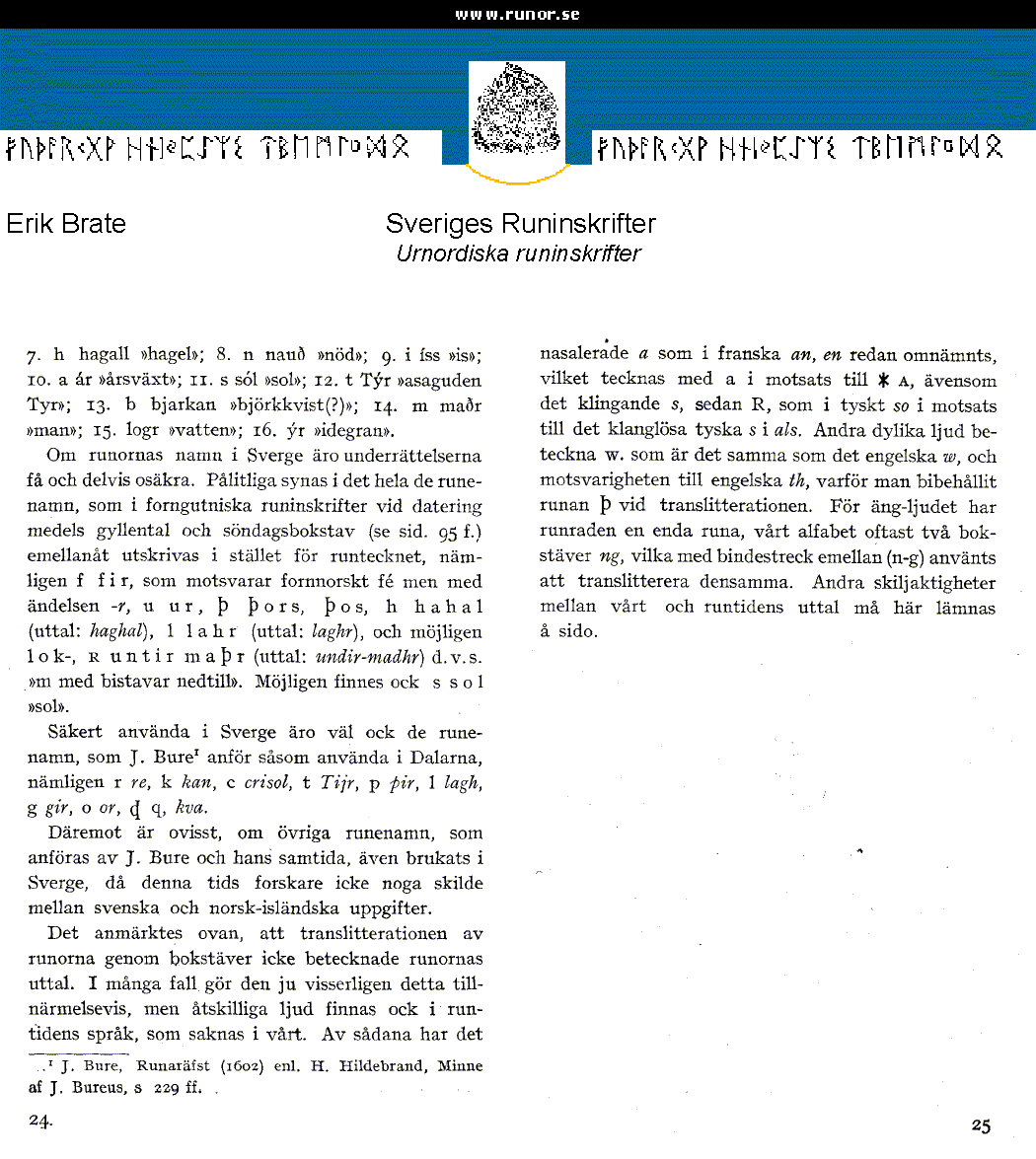
7, h hagall ╗hail╗; 8. n nau ╗distress╗; 9. i iss ╗ice╗; 10. a ßr
╗increase of the year╗; 11. s sˇl ╗sun╗; 12. t Třr ╗the god named Tyr╗; 13. b bjarkan ╗birch twig(?)╗;
14. m mar ╗man╗; 15. logr ╗water╗; 16. yr ╗yewtree╗.
There are some instances where the name of the runes are mentioned but they are few and uncertain.
The most reliable runnames appears to be those who in ancient gutnish runic inscriptions,
at dating using "goldennumber" and "sundayletter" (se page 95 f.), occasionally printed
instead of the runicsign, namnly f fir, corresponding to old norwegian fe but with endings
-r, u ur, ■ ■ors, ■os, h hahal (pronunced: haghal), l lahr (pronunced:
laghr), and possibly 1ok-, Runtir ma■r (pronunced: undir- madhy) i.e. ╗m with "branches" at the bottom╗.
Possibly there is also s sol ╗sun╗.
Certainly in use in Sweden is also the rune names, which
J. Burei states such as use of Dalarna, namely r re, k kan, c crisol,
t Tijr, p Pir, 1 lagh, g gir, o or, q kva.
On the other hand is uncertain whether the other rune names, as invoked by J. Bure and his contemporaries,
also used in Sweden, where this time scientists not carefully distinguished between the Swedish and
Norwegian-Icelandic data.
It stated above, the translitteration of runes through letters not labeled runes pronunciation.
In many cases, it does so in a roughly, but many sounds are also found in runic era language,
which is lacking in our language.
Of these, has
(1) J : Bure, Runarńfst (1602) enl. H. Hildebrand, Minne af J . Bureus, s 229 ff.
uses a nasal as in French an, an already mentioned,
which is characterized by a in contrast to A *, as well as the sound of s,
then R, as in German "so" in contrast to the weaksounding German s in "als".
Other such sound denote w, which is the same as the English w, and equivalent to the English th,
why the rune ■ at transliterationen was maintained.
For the sound ang has the runic alphabet a single rune, our
alphabet usually two letters ng, which with a hyphen between
(n-g)(ŋ)
are used for transliteration. Other differences between our and the runic eras accent has been omitted here.